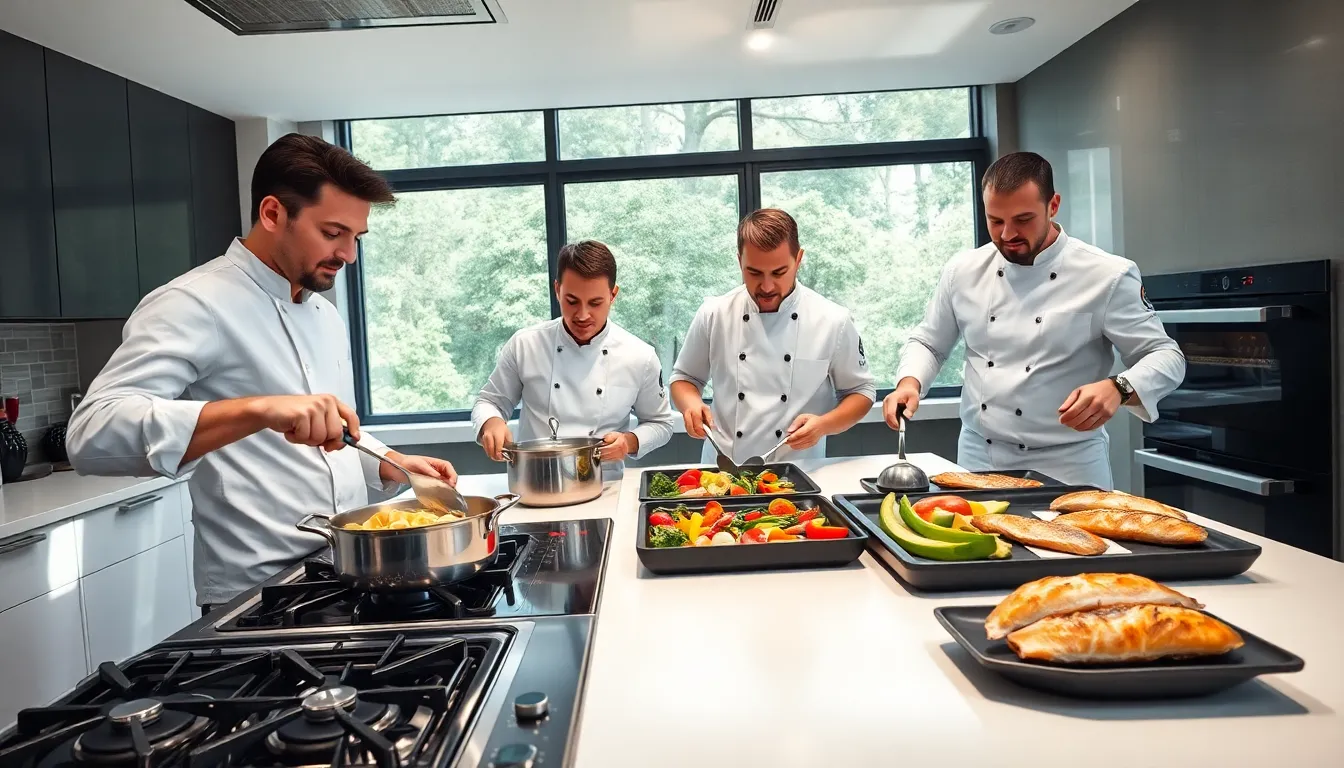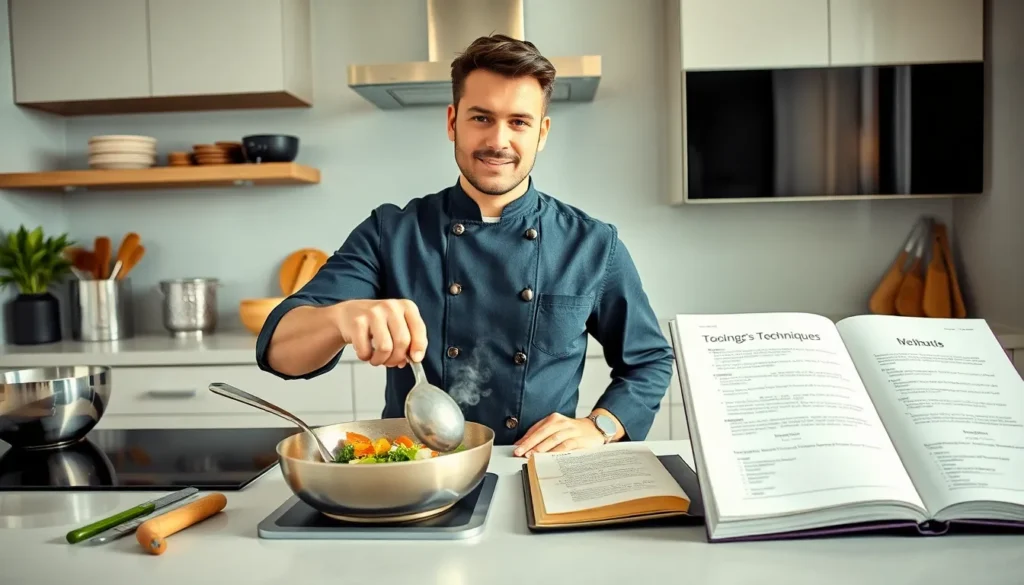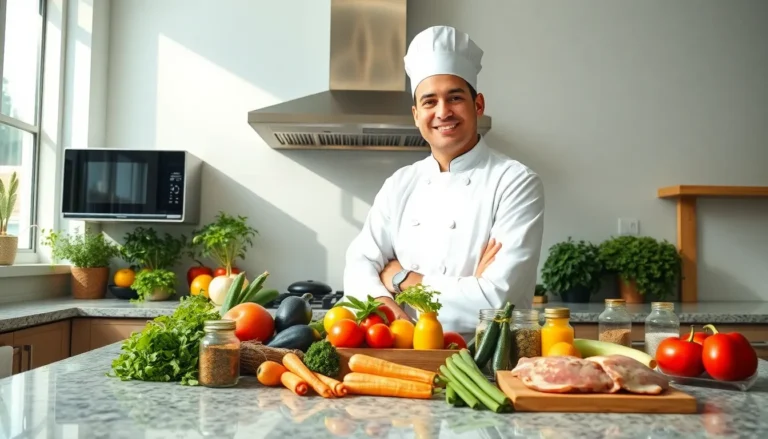Table of Contents
ToggleWhen it comes to cooking, it’s not just about tossing ingredients in a pot and hoping for the best. Understanding various cooking techniques can turn a bland meal into a culinary masterpiece. Think of it like learning a new language: the more you know, the better you can express yourself. Whether you want to whip up a gourmet dish or simply impress dinner guests, mastering a range of cooking techniques is essential. Not to mention, it’s a fantastic way to spice up your meal prep, because who says cooking has to be boring? Let’s jump into the flavorful world of cooking techniques and unlock the secrets of the culinary arts.
Understanding Cooking Techniques

Cooking techniques are the backbone of any great dish. They involve various methods used to prepare food, each contributing to flavor, texture, and overall appeal. Understanding the different cooking techniques can elevate a simple meal into an extraordinary dining experience. Whether boiling, roasting, sautéing, or grilling, every technique has its unique benefits and can dramatically alter the outcome of a recipe. By mastering these techniques, cooks can gain a better grasp of how to control heat, time, and flavors to achieve the desired results. Let’s explore some basic and advanced cooking techniques to help enhance culinary skills.
Basic Cooking Techniques
Basic cooking techniques form the foundation for aspiring chefs and home cooks alike. Here are a few essentials everyone should know:
Boiling
This technique involves cooking food in boiling water or other liquids. Perfect for pasta or vegetables, boiling is straightforward but requires attention to avoid overcooking.
Sautéing
Sautéing is a quick method that uses a small amount of oil or fat in a hot pan to cook food, promoting browning and flavor enhancement. Ideal for vegetables or meats, sautéing allows for a lot of creativity.
Roasting
Roasting brings out the natural sweetness of ingredients by cooking them in an oven. This technique is perfect for meats and vegetables, resulting in crispy exteriors and tender insides.
Baking
Wielding an oven to create delicious pastries, breads, and casseroles is no small feat. Baking requires precision but rewards with scrumptious creations.
Steaming
Steaming retains nutrients in vegetables and is a healthier alternative to boiling. Using a steamer basket allows the food to cook gently without losing flavor or nutrition.
By mastering these basic techniques, cooks can build a solid foundation for more complex culinary skills.
Advanced Cooking Techniques
Once comfortable with the basics, it’s time to take cooking skills to the next level. Advanced techniques can transform a home cook into a kitchen wizard. Here are some to consider:
Sous Vide
This method involves vacuum-sealing food in a bag and cooking it slowly in water at a precisely controlled temperature. It allows for incredible flavor retention and tenderness, making it popular among gourmet chefs.
Confit
A French technique, confit consists of cooking food slowly in fat, usually oil. This method can be used for meats or vegetables, infusing rich flavors into the ingredients.
Emulsifying
Creating a stable mixture of two ingredients that typically don’t combine (like oil and vinegar) is what emulsifying is all about. Think of salad dressings or mayonnaise.
Searing
This technique involves cooking the surface of food at high heat until a browned crust forms, sealing in juices. It’s commonly used for meats, lending a beautiful color and rich flavor.
Braising
Braising combines cooking techniques: simmering food in a bit of liquid while covered. This method is excellent for tougher cuts of meat, making them tender and flavorful.
Mastering these advanced techniques adds sophistication to any cook’s repertoire and can elevate every dish.
Healthy Cooking Techniques
Opting for healthier cooking methods can make a significant impact on diet and overall well-being. Here are a few techniques that promote healthier eating:
Grilling
This cooking method not only adds delightful charred flavors to meats and vegetables, but it also allows for excess fats to drip away, making it a healthier option.
Poaching
Cooking food gently in water or broth keeps it tender without the need for added fats. Poached eggs and fish are perfect examples of this technique.
Baking instead of Frying
Instead of frying, consider baking foods. Using an oven eliminates the need for excess oils, resulting in lower-fat meals while still keeping flavors intact.
Stir-Frying
Like sautéing but quicker, stir-frying cooks food at high temperatures with minimal oil while retaining nutrients. Vegetables stand out when cooked this way, perfect for colorful and healthy meals.
Raw Food Techniques
Embracing raw techniques by incorporating fresh fruits and vegetables into dishes retains their nutrients and natural flavors, promoting health and vitality.
These methods not only focus on flavor but also create healthier dishes that encourage well-being.
International Cooking Techniques
Different cultures often have unique cooking techniques that showcase their traditions and ingredients. Understanding these can add flair to any home cooking.
Stir-frying (Chinese)
Utilizing a hot wok, this fast cooking technique enhances flavors while maintaining crispness in vegetables and meats. Great for quick meals.
Tandoori (Indian)
Tandoori cooking involves marinating meats in yogurt and spices before cooking them in a clay oven. This method infuses deep flavors and tenderness.
Ceviche (Peruvian)
A raw preparation, ceviche involves marinating fish in citrus juices. The acidity cooks the fish while boosting flavors, creating a refreshing dish.
Tempura (Japanese)
Coating seafood and vegetables in batter and frying them lightly offers a delicious crunch without overwhelming the main ingredient’s flavor.
Casserole (French)
Simmering ingredients together for a long time allows flavors to meld beautifully in this dish of layered ingredients, perfect for cozy family meals.
Exploring these international techniques opens up a world of flavors and culinary traditions, enriching any cook’s skill set.
Tips for Mastering Cooking Techniques
Mastering cooking techniques requires practice, patience, and a bit of creativity. Here are some useful tips to help enhance culinary skills:
- Practice Consistently: Like any skill, cooking improves with practice. Make a dish multiple times to understand nuances.
- Pay Attention to Temperature: Understanding how heat affects ingredient preparation is crucial. Always preheat pans and ovens.
- Experiment with Flavors: Don’t be afraid to switch up spices and ingredients to discover new flavor combinations and enhance dishes.
- Use Quality Ingredients: Good cooking often starts with quality ingredients. Fresh produce and meats yield better flavors and results.
- Learn from Mistakes: Every cook makes errors: those mistakes are valuable opportunities to learn and improve skills.
Through commitment and exploration, anyone can refine their cooking techniques and achieve delicious results.








